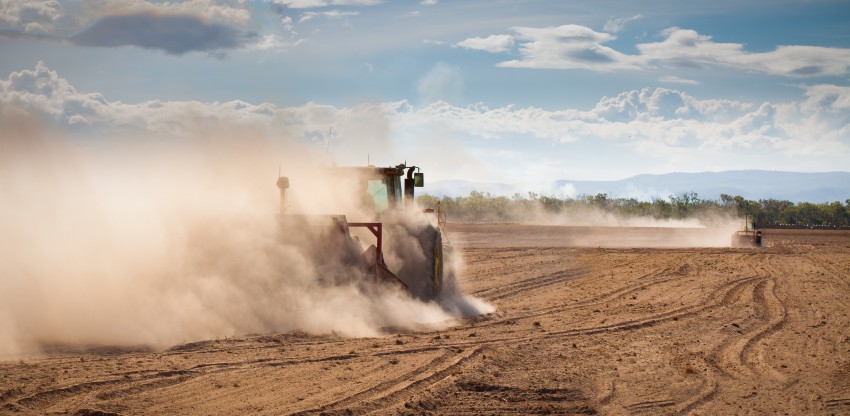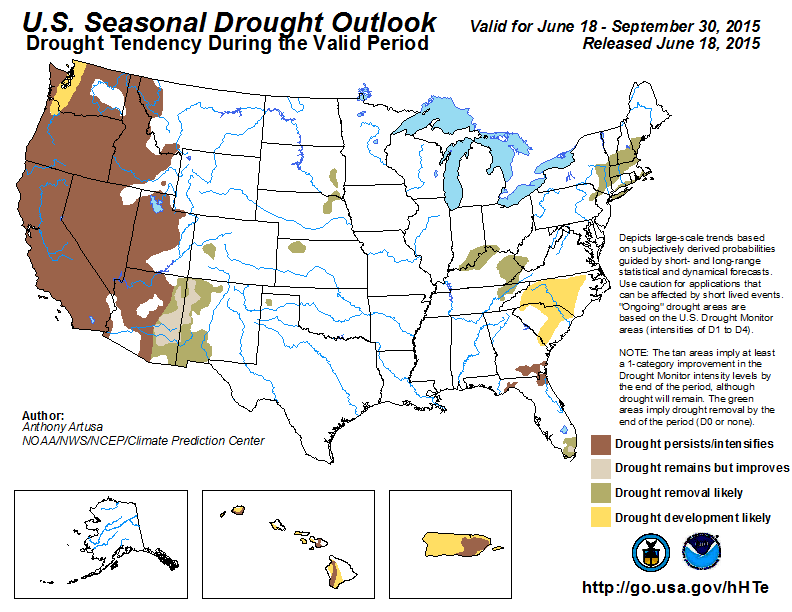Did you know there are multiple types of drought? When we hear the word drought, most people think of a meteorological drought which is an assessment of the degree of dryness compared to the regional average and duration of this dry period. The meteorological drought takes into account precipitation and temperatures among other parameters as they influence the dry period. There are also hydrological droughts which is when decreased precipitation affects soil moisture, lake levels, groundwater, etc. Lastly, there is agricultural drought which is when the water supply is not able to meet crop demands.
The current drought in the North American west started in 2011 with the persistence of a high pressure ridge across the area. A ridge brings calm, quiet weather with sinking air therefore limiting precipitation development and allowing enhanced radiative heating. According to the USDM, 57% of the west was experiencing moderate to exceptional drought at the end of May 2015. The image below shows the percent of average precipitation over the last several years. It shows that California is still in a severe drought with 25-70% of the average precipitation covering a large portion of the state.
The west has seen rain throughout this summer which has allowed certain areas to no longer be in a drought, like areas of the Pacific Northwest. However, areas like California are still in a drought despite rain because it has not been long term, soaking rain, like a tropical system. In order to alleviate a drought, we need multiple rounds of soaking rains. Thunderstorms bring heavy rain that quickly runs off into drainage bins and causes water levels to rise, bringing flooding risks. Thunderstorms do not provide long term drought relief but may alleviate some minor concerns temporarily.
The outlook for the current drought is expected to continue, however, with El Nino set up across the tropical Pacific, hurricane season is expected to be more active across the Pacific. The enhanced moisture may reach the Southwest which could help drought conditions, but the drought is expected to persist across the rest of the West. The onset of the summer monsoon will also help alleviate the southwest from the drought, with torrential rains possible.

